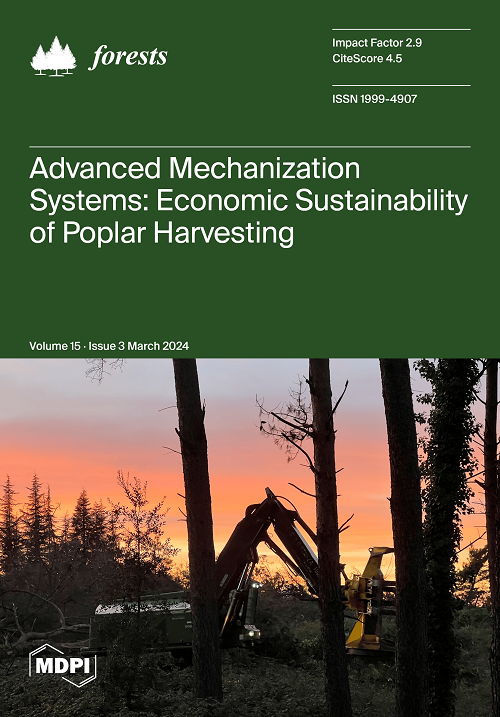Comparison of Soil Microbial Community between Managed and Natural Vegetation Restoration along a Climatic Gradient in Karst Regions
IF 2.4
2区 农林科学
Q1 FORESTRY
引用次数: 0
Abstract
Managed and natural vegetation restorations are two vital measures of land restoration; however, their effects on soil microbial communities at a large scale are not clearly understood. Hence, changes in the microbial community composition after 15 years of vegetation restoration along a climatic gradient in the subtropical karst region of Southwest China were assessed based on phospholipid fatty acids (PLFAs) profiles. Managed (plantation forest) and natural (naturally recovered to shrubbery) vegetation restoration types were compared, with cropland and mature forest serving as controls. Soil microbial community abundance was significantly higher under the two vegetation restoration types than in the cropland; however, it was lower than in the mature forest. The abundance, composition, and structure of soil microbial communities did not differ significantly between plantation forest and shrubbery. Soil organic carbon or total nitrogen was the primary factor positively affecting soil microbial abundance, whereas the mean annual temperature (MAT) was recognized as the primary factor contributing to the variation in the soil microbial community structure. Moreover, temperature had opposite effects on different indicators of microbial community structure. That is, it positively and negatively affected the ratios of gram-positive to gram-negative bacterial PLFAs (GP:GN) and fungal to bacterial PLFAs (F:B), respectively. Our results show that both vegetation restoration types have the ability to improve soil productivity in karst areas. Furthermore, shifts in soil microbial community structure (GP:GN and F:B ratios) induced by warming are likely to lead to a higher proportion of labile carbon, which is sensitive to soil tillage. Hence, more attention should be paid to ecological restoration in warmer karst areas to alleviate the severe loss of soil carbon in croplands.喀斯特地区气候梯度下人工植被与自然植被恢复土壤微生物群落比较
人工植被恢复和自然植被恢复是土地恢复的两项重要措施;然而,它们在大范围内对土壤微生物群落的影响尚不清楚。因此,基于磷脂脂肪酸(PLFAs)谱,对西南亚热带喀斯特地区植被恢复15年后微生物群落组成的变化进行了评估。以耕地和成熟森林为对照,比较了人工经营(人工林)和自然(自然恢复为灌木林)植被恢复类型。两种植被恢复类型土壤微生物群落丰度均显著高于农田;但低于成熟林。人工林与灌木林土壤微生物群落的丰度、组成和结构无显著差异。土壤有机碳或全氮是影响土壤微生物丰度的主要因素,而年平均温度是影响土壤微生物群落结构变化的主要因素。温度对不同指标微生物群落结构的影响相反。也就是说,它分别对革兰氏阳性与革兰氏阴性细菌PLFAs的比值(GP:GN)和真菌与细菌PLFAs的比值(F:B)产生正向和负向影响。结果表明,两种植被恢复类型均具有提高喀斯特地区土壤生产力的能力。此外,气候变暖引起的土壤微生物群落结构(GP:GN和F:B)的变化可能导致对土壤耕作敏感的活性碳比例升高。因此,应更加重视温暖喀斯特地区的生态恢复,以缓解农田土壤碳的严重流失。
本文章由计算机程序翻译,如有差异,请以英文原文为准。
求助全文
约1分钟内获得全文
求助全文
来源期刊

Forests
FORESTRY-
CiteScore
4.40
自引率
17.20%
发文量
1823
审稿时长
19.02 days
期刊介绍:
Forests (ISSN 1999-4907) is an international and cross-disciplinary scholarly journal of forestry and forest ecology. It publishes research papers, short communications and review papers. There is no restriction on the length of the papers. Our aim is to encourage scientists to publish their experimental and theoretical research in as much detail as possible. Full experimental and/or methodical details must be provided for research articles.
 求助内容:
求助内容: 应助结果提醒方式:
应助结果提醒方式:


